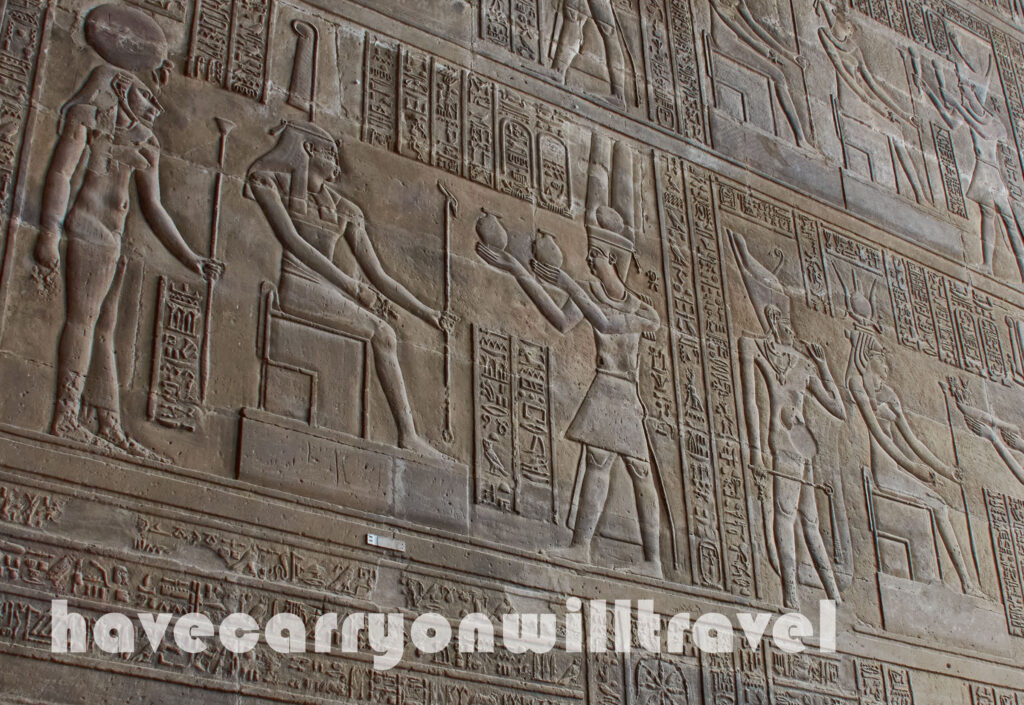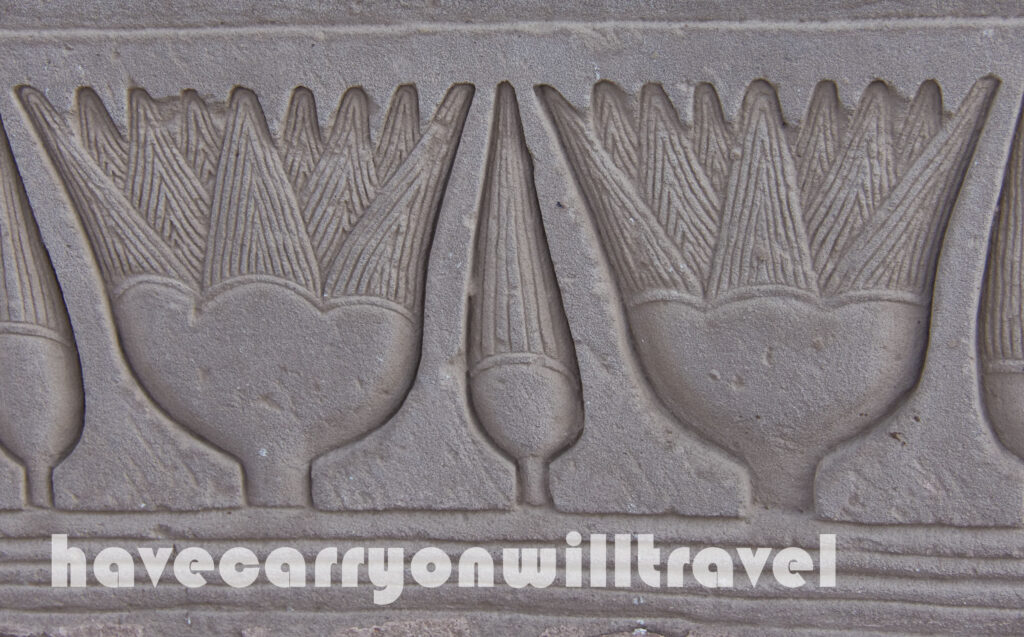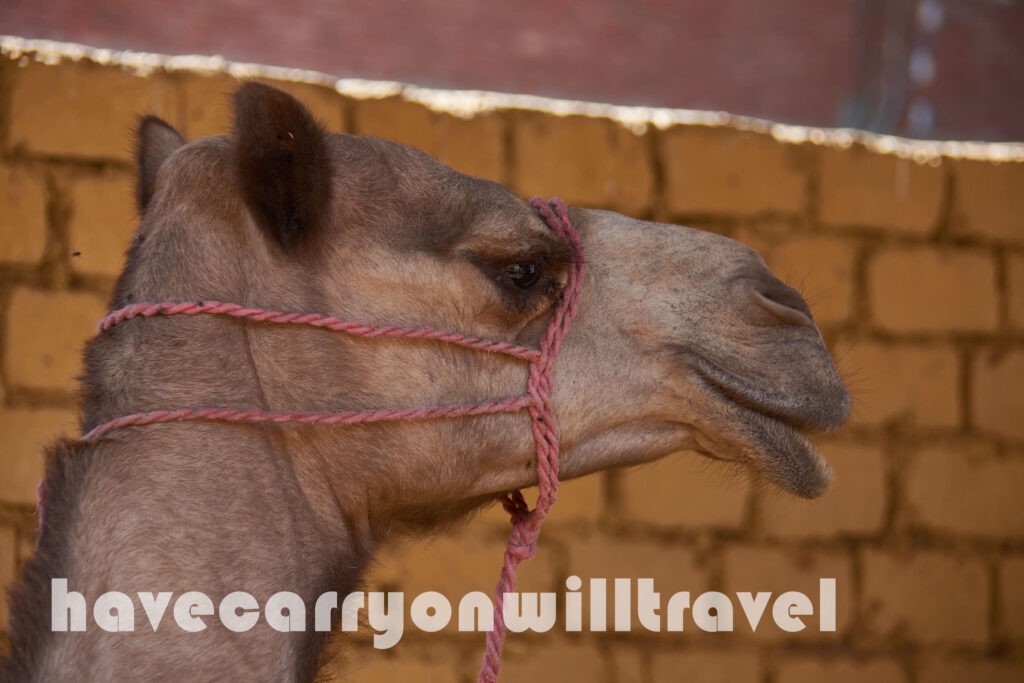
There are two types of relief used on the temple walls. High relief, where the background is flat figures and objects are raised. Deep cut, or low, relief is where the figures and objects are cut into the stone and the background is higher.

Our small group have visited two separate households along the Nile. This is what makes the tours with Wild Frontiers so special. The first one is with a young woman named Esma, who invites us into her home and serves us tea while we chat about her life and the community around her. The second visit was with Syad and his family. He is quite humorous but very knowledgeable about what is going on in the world. The village where he lives has 300 people, who are farmers and fishermen. His family has two acres to farm, where they grow various crops to sell and to consume personally. It is a very enjoyable visit and we run overtime and could have stayed longer.

We visit the site of the Daraw camel market, but unfortunately the market is not on today. A fellow shows us his “barn” where he has four camels, a horse, some cows, sheep and goats. The camels are two mothers and two youngsters. They seem content and weren’t bothered by us tourists. Most of the camels in Egypt come from Sudan and are used for transportation, meat, milk, breeding and tourism. Rather sadly, the camels in the tourist industry (like in Giza near the great pyramids) are not treated as they should be.
